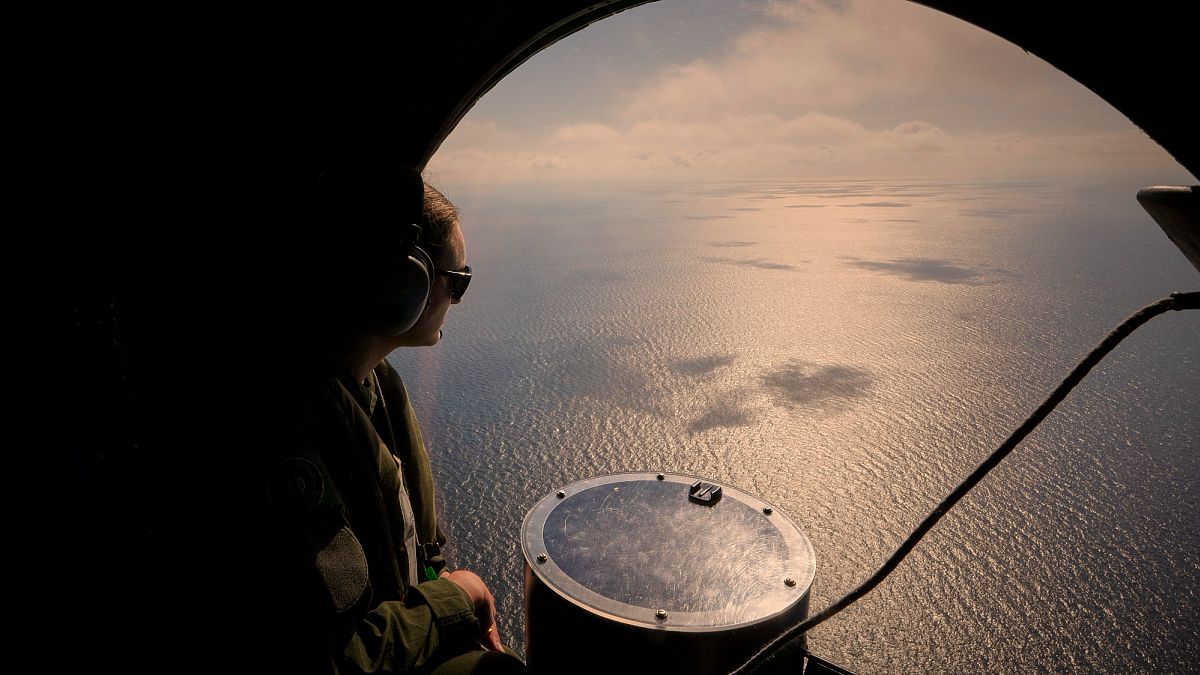Hundreds of sea mines have been threatening traffic in the Black Sea since the early days of the war in Ukraine. The waters of NATO member states like Bulgaria, Romania and Turkey are unsafe and must be permanently monitored by NATO.
The risk of stray mines represents considerable economic losses for the countries bordering the western and eastern shores of the Black Sea and can lead to higher insurance policies, more complicated routes and damage to tourism.
Demining is therefore a crucial activity for the security and the economies of NATO’s and the EU’s eastern flank.
The use of mines is part of the Russian attempt to approach Odessa and the Ukrainian attempt to defend the city from any landing craft. So both sides make use of such mines for offensive and defensive reasons.
Remotely operated vehicle at sea a game changer?
The war in Ukraine marked a turning point in the militarisation of drones and unmanned vehicles in the skies, on land and in the seas.
In the Black Sea, for example, which is a so-called semi-enclosed-sea, drones have played a lethal role by forcing Russian naval ships to leave Sevastopol and find shelter in the port of Novorossiysk, in the eastern Black Sea, far away from the range of the Ukrainian sea drones and naval missiles.
Drones have also proved to be of great use to navies of countries not directly involved in the fighting.
For example, the Romanian navy has for some time now started regular mine clearance operations with submarine drones imported from the UK.
A TV crew from Euronews Romania boarded a minesweeper equipped with the submarine drone, Sea Fox, to cover the demining operations.
The Sea Fox underwater drones on the minehunter “Ion Ghiculescu”, have already been successfully tested in the deep.
The unmanned remote-controlled submarine vehicle can destroy sea mines remotely without endangering crews.
Denis Giubernea Commander of the Minehunter, explains how the Sea Fox drone works.
“It’s remote-controlled. It has a cable, a 1,500-meter fibre optic, and it’s guided through the water. So, it’s permanently tethered to the ship. After the object is identified as a mine this drone returns home and after that action, we use another neutralizing drone that we send in the vicinity of the object that we have already identified as a mine. And on contact this drone, which already has explosives on board, self-destructs,” he said.
150 sea mines have been discovered floating adrift in the Black Sea since the outbreak of the war in Ukraine, six of them in Romanian territorial waters. And they represent a constant danger.
“Ukraine has carried out defensive mines and the Russian Federation has carried out offensive mines. We cannot know their exact number but there may be mines that may drift and therefore the risk is getting higher and higher,” says Denis Giubernea.
According to military experts, the role of drones in marine warfare is of great tactical relevance. The unmanned maritime vehicles have proved essential in the mines hunting.
A new generation of fully autonomous sea-drones
The Sea Fox type still has to be controlled using an optical tether, which requires the minehunter vessel to be relatively close to the theatre of operations.
Sidharth Kaushal, Senior Research Fellow at the Royal United Services Institute (RUSI) told Euronews, “If a system is fully autonomous, the vessel controlling it can operate from further back, which allows for it to be safe against threats live, cruise missiles or, indeed, uncrewed surface vessels, which can be used to target mine countermeasures vessels.”
According to Kaushal, identifying the classification of a mine is a time-consuming task that involves a combination of different levels of detection and human analysis.
Moreover, the use of artificial intelligence in demining has fewer ethical implications than other areas of military operations where final human judgement is required.
“Mine hunting is an uncontroversial area to deploy fully automated systems, unlike situations which involve killing. The disposal of mines is a less politically controversial area” he added.
Read the full article here
















